#Mopsa the Fairy
Explore tagged Tumblr posts
Photo

'Mopsa the Fairy' by Jean Ingelow, 1887
2K notes
·
View notes
Text
Children's Book Illustrations that Stayed with Me as a Little Girl (Part 1)
The Piper at the Gates of Dawn illustration for The Wind in the Willows by Mary Jane Begin

Mermaid's Lagoon from Peter Pan by Scott Gustafson
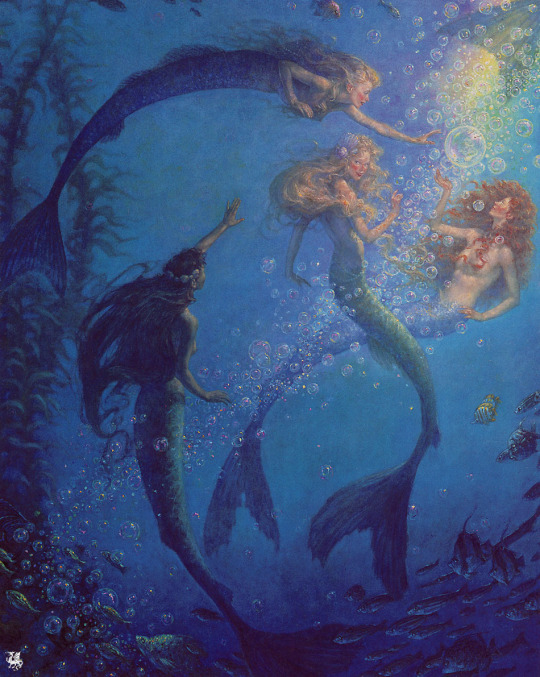
Jean Zallinger's Hook from a Bullseye Step into classics version of Peter Pan. He's certainly not as dashing as Jason Isaacs, and I loved his teeth which I imagined all yellowed and reminded me of a skull. I also imagined his eye gleaming red.
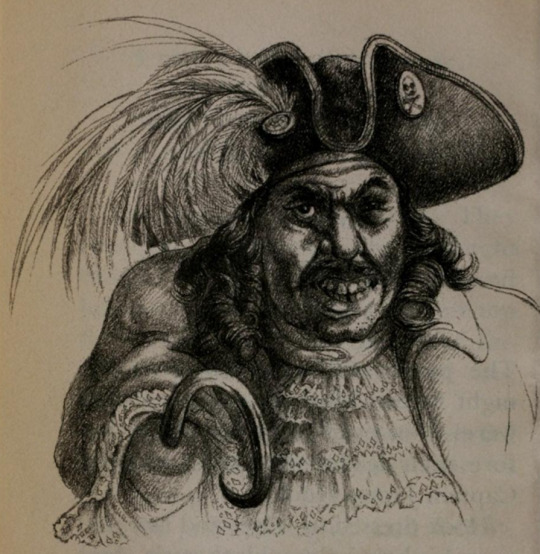
Michael Hague's take on Smaug
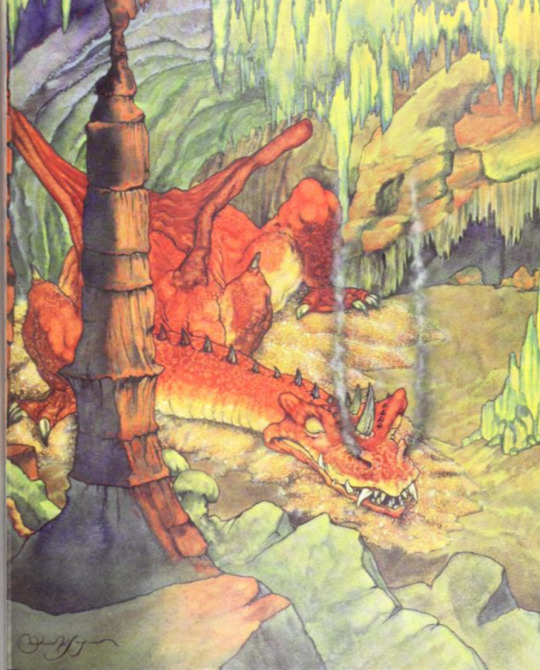
Freya's Hall illustration from D'aulaire's Book of Norse Myths. This illustration soothed me and I wanted to be in their company.

And more D'aulaire art, from their Book of Greek Myths, Gaea and Uranus. I LOVE Gaea in particular - the way the river flows through her neck, the way his stars are reflected in the pools of her eyes...

...the birth of Aphrodite... I LOVE the colors here, the oranges and golds that mingle with the blue-green of the sea.
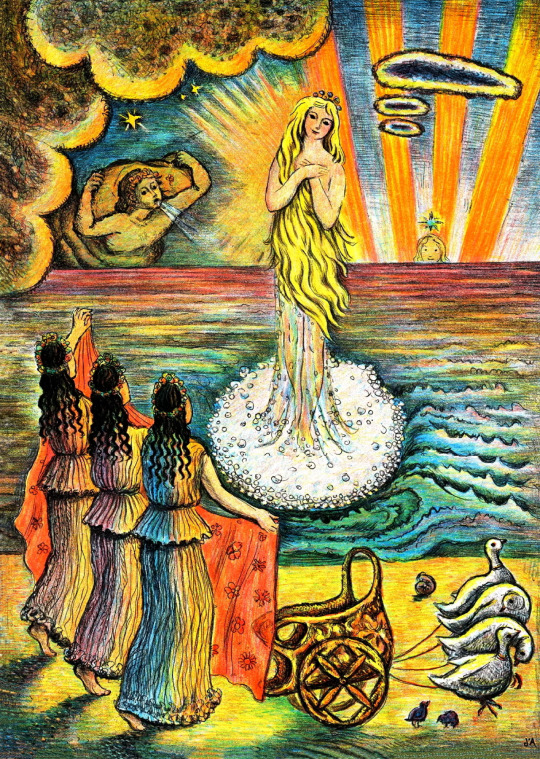
...and Perseus and Medusa. I loved Medusa's design in this book because it felt so unique, not usual depiction I was familiar with and also not Harryhausen's take.
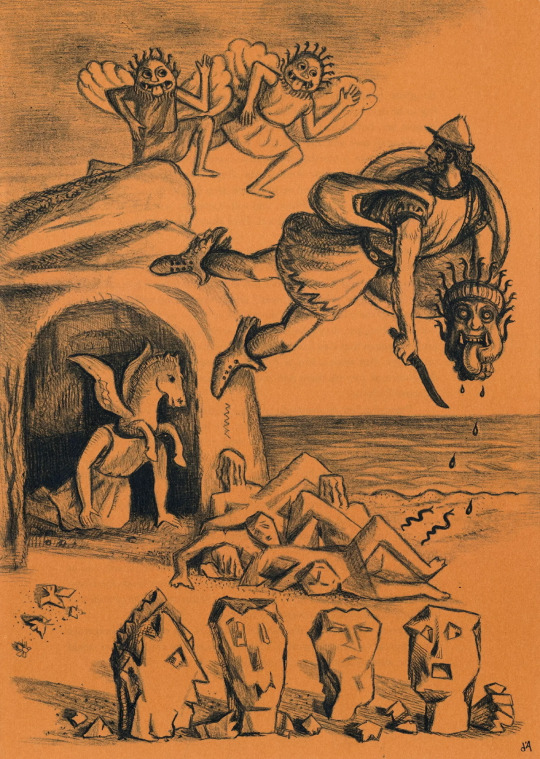
Arthur Rackham's illustration of the third sister's encounter with the human children. This one definitely encouraged my naturist tendencies when I was little lol.

the Asian Lung from Dragonology

Dora Curtis and Diana Stanley's illustrations for a 1964 edition of Jean Ingelow's Mospa the Fairy that I found in my elementary school library - ALL of them - the header for the first chapter always connected with me because it promised wonder just on the edges of our own world, even though it wasn't one of the fabulous color plates...

...an example of which I share here.
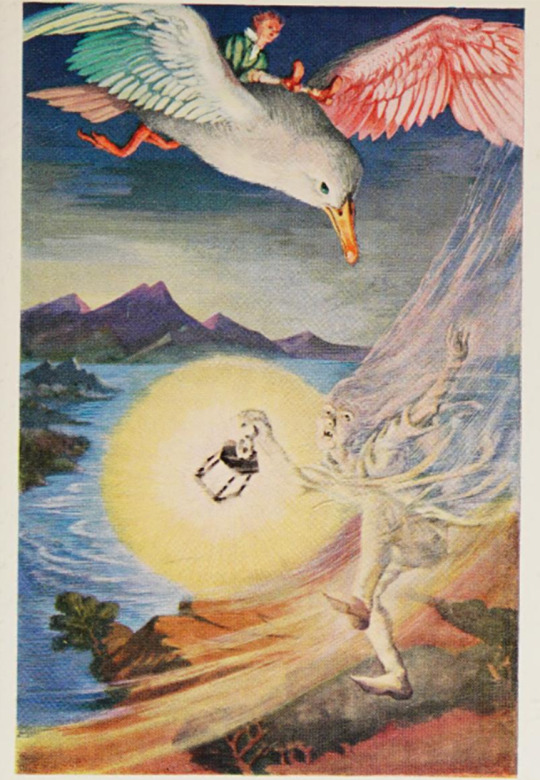
(I think I'll continue in Part 2 because this post is getting rather long.)
@ariel-seagull-wings @themousefromfantasyland @thealmightyemprex @princesssarisa @amalthea9 @grctw @brokenwild
#the wind in the willows#peter pan#the hobbit#mopsa the fairy#d'aulaire's book of greek myths#the little mermaid
41 notes
·
View notes
Text

Jean Ingelow, from "Above the Clouds"
1 note
·
View note
Text

Illustration from Jean Ingelow's Mopsa the Fairy by Dorothy P. Lathrop (1927)
#dorothy p. lathrop#art#illustration#golden age of illustration#1920s#1920s art#vintage art#vintage illustration#vintage#american artist#american art#books#book illustration#fairy tale#fairy tales#fairytale art#fairy#fairies#classic art
835 notes
·
View notes
Text
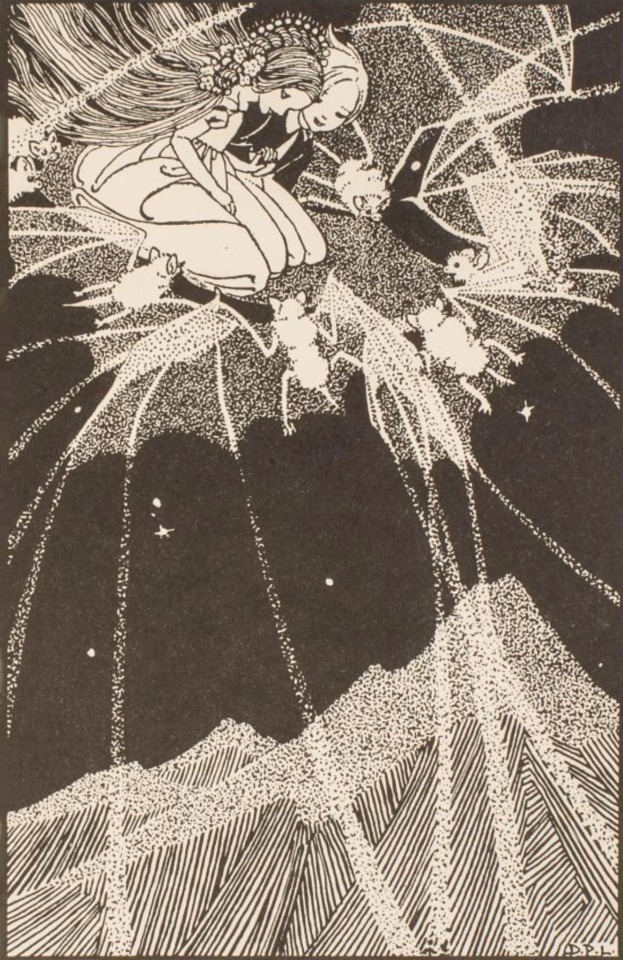
Mopsa the Fairy by Jean Ingelow
1927
Artist : Dorothy P. Lathrop
#jean ingelow#dorothy p. lathrop#1927#children's literature#children's illustration#fairy tale#children's books#fairy story#vintage illustration#children's book#fairy tales#old illustration#old book#fairy stories#fairy
108 notes
·
View notes
Text
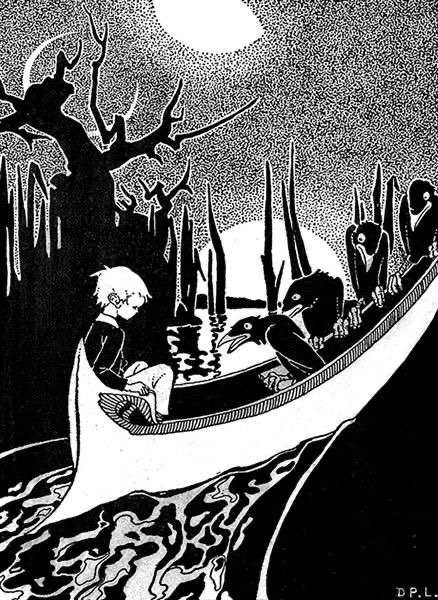
Dorothy Lathrop illustration from
'Mopsa The Fairy' by Jean Ingelow - 1920
26 notes
·
View notes
Photo

Dorothy Pulis Lathrop | Mopsa the Fairy | 1927
17 notes
·
View notes
Photo

'The Queen', from ''Mopsa the Fairy'' by Jean Ingelow, 1919 Source: https://archive.org/details/mopsafairy00inge
33 notes
·
View notes
Photo

Dorothy P. Lathrop (American,1891–1980)
From the book “Mopsa the Fairy”,1927
64 notes
·
View notes
Photo


This edition of Mopsa The Fairy was published in 1927 by the Macmillan Company. Jean Ingelow was a well-known English poet and novelist. This children’s story tells of a young boy who discovers a nest of young fairies and they go on adventures together.
23 notes
·
View notes
Photo


Mopsa the fairy illustrations by Dorothy Lathrop <3
11 notes
·
View notes
Text
"...Victorians also created original stories by using the tropes of folklore in innovative ways. From the middle of the century onward, some of the best writers of 19th-century England turned their hand to children’s fiction: John Ruskin (The King of the Golden River,1841), Charlotte Yonge (The History of Tom Thumb, 1855), Christina Rossetti (Goblin Market,1862), Charles Kingsley (The Water-Babies,1863), Lewis Carroll (Alice’s Adventures in Wonderland, 1865), Jean Ingelow (Mopsa the Fairy, 1869), Edward Lear (Nonsense Songs, 1871), George MacDonald (The Princess and the Goblin, 1872), Mary Louisa Molesworth (The Tapestry Room, 1879), Mary de Morgan (The Necklace of Princess Fiorimonde, 1880), Juliana Horatio Ewing (Old-fashioned Fairy Tales, 1882), Oscar Wilde (The Happy Prince and Other Tales, 1888), Ford Madox Ford (The Queen Who Flew, 1894), Laurence Houseman (House of Joy, 1895), Evelyn Sharp (The Other Side of the Sun, 1900), Rudyard Kipling (Puck of Pook’s Hill, 1906), J. M. Barrie (Peter Pan in Kensington Garden, 1906), Edith Nesbit (The Enchanted Castle, 1907), and Kenneth Grahame (The Wind in the Willows, 1908).
Chances are that unless you’ve done more reading than most in the field of Victorian literature, you’re probably more familiar with the men on the list above than with the women (with the possible exception of Christina Rossetti or E. Nesbit). As I prepared this Introduction, a number of well-read friends asked me if there were any female fantasy writers in 19th-century England, and the answer is: Yes, indeed there were, writers so popular and financially successful in their day that as a group they incited the envy and approbation of many male colleagues. George Gissing’s novel New Grub Street, published in 1891, paints a vicious portrait of an outspoken woman writer, vain and utterly talentless, who is lionized for her children’s fiction while the lives of "real" literary artists fall into ruin all around her.

So if these women were so successful, why are the books by the men above still known and loved by children today while most of those by women are read only by feminist scholars? It's not just gender bias, but also because the tales by 19th-century women can make for distinctly uncomfortable reading. Down through the centuries, fairy tales have often been used as a way of speaking, in symbolic language, about topics at odds with the dominant culture. For Victorian women, it was the totality of their lives at odds with the culture they lived in, hemmed in by 19th-century ideals of femininity, duty, and motherhood. What one finds over and over again beneath the surface of magical stories by Victorian women is anger.
Queen Victoria's Book of Spells Introduction: Fantasy, Magic, and Fairyland in the 19th Century
7 notes
·
View notes
Photo

An illustration by Dorothy L. Lathrop for 'Mopsa the Fairy' by Jean Ingelow. Harper and Brotheres. 1927
13 notes
·
View notes
Photo

‘Mopsa The Fairy’ by Jean Ingelow, 1920, Dorothy Lathrop
17 notes
·
View notes
Photo

From the book “Mopsa the Fairy” (1927) art by Dorothy Lathrop [1032 x 1487]
0 notes